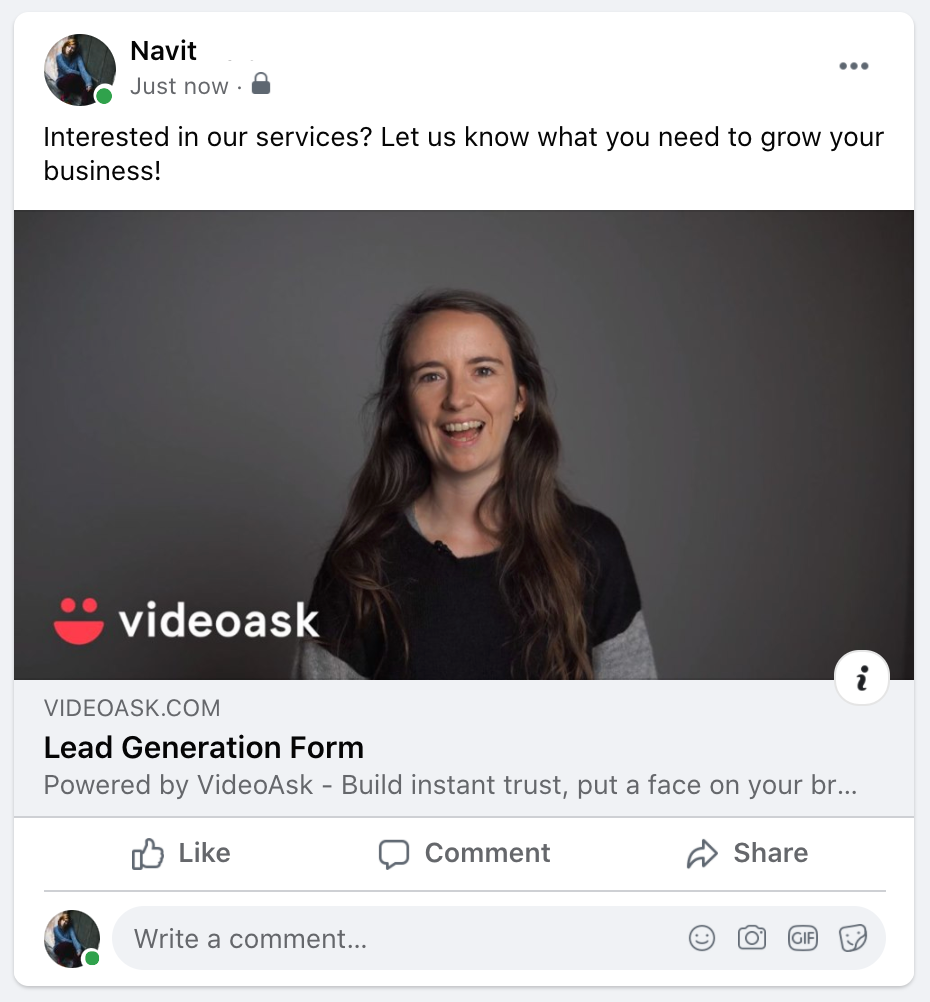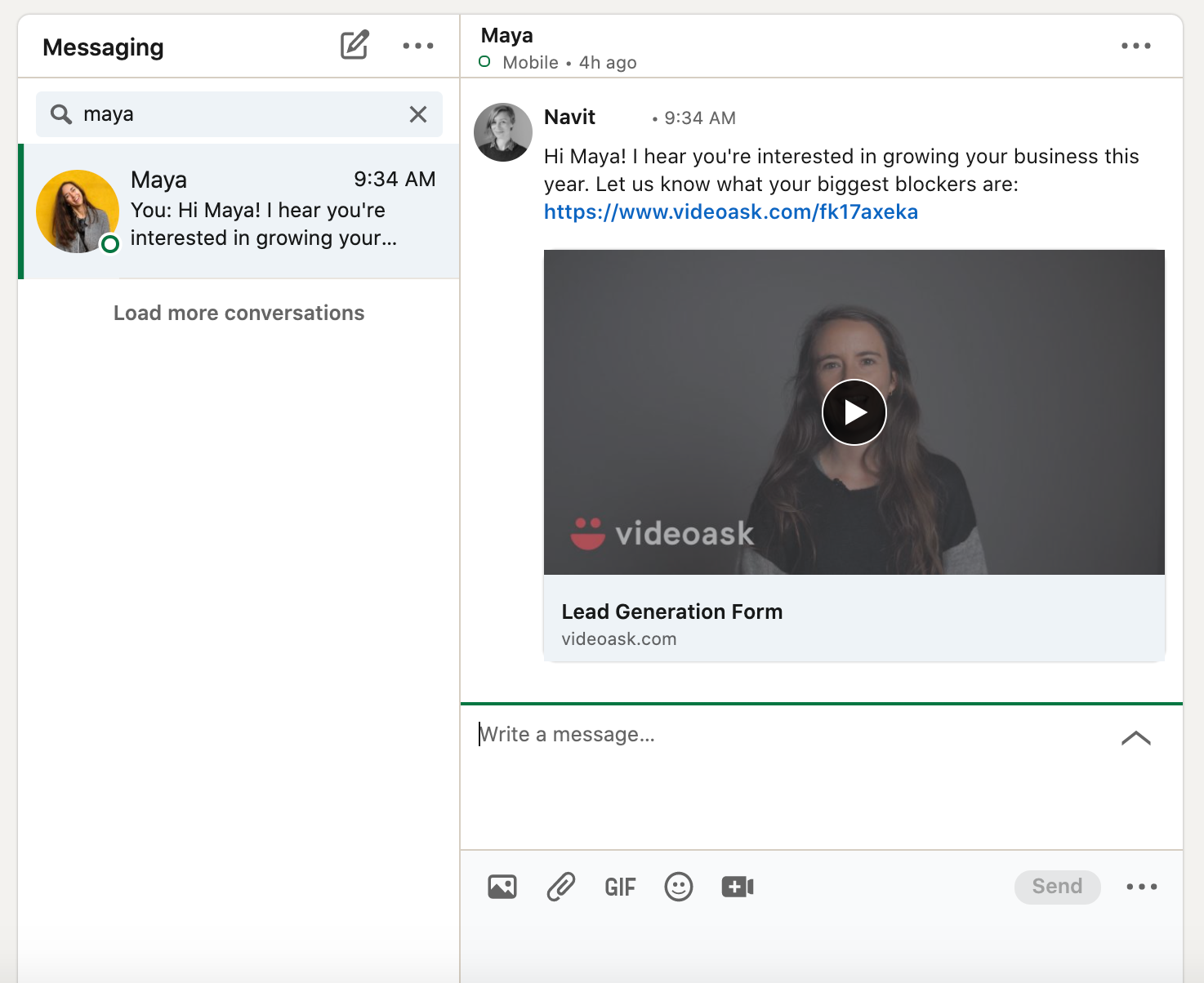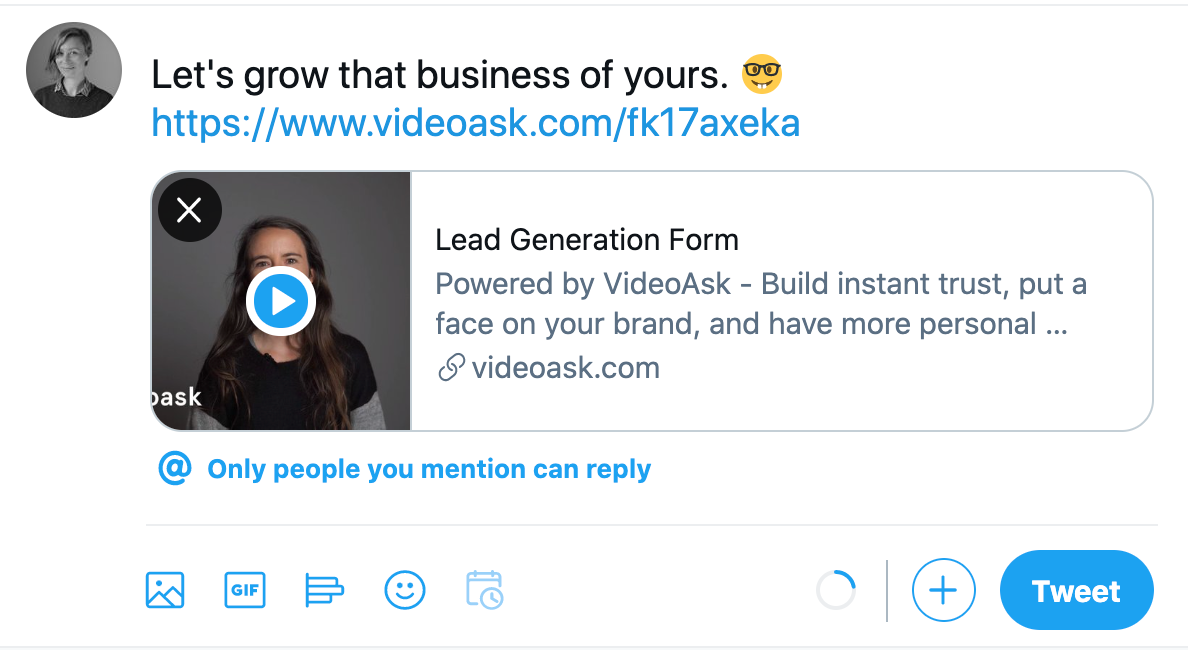VideoAsk is a powerful tool to drive engagement and provide a more human touch on social networking sites like Facebook, LinkedIn, and Twitter.
To share your videoask on your favorite social media platform, just follow these simple steps.
Select the videoask you want to share on social media and click Share & embed.
Click Share on social media.
Check you're happy with the videoask thumbnail, or choose a new one if you like.
Choose the social media platform where you'd like to post your videoask and share away!
Note: You can also share your videoask on social media platforms by simply copying and pasting the videoask URL link into the message or post.
How do videoasks work on social media?
Social media platforms have a short list of video platforms they have whitelisted that allow for truly embedded video content (basically just YouTube). As a newish product, unfortunately, VideoAsk is not yet on that list (but share away, and hopefully we will be soon!).
In the meantime, your videoasks will display a meta image or GIF when you share them on social media. When clicked, respondents are directed to a new window or tab to complete the videoask.



However, there are a few caveats to be aware of when sharing videoasks on these platforms. Below we'll take a look at some of the issues you could face and how you can resolve them.
I edited my videoask's thumbnail but the updated version isn't displaying on my LinkedIn post. Why not?
LinkedIn uses a preview cache to create a preview snippet of your videoask link. This means that if you edit your videoask's thumbnail after pasting the link into your post, LinkedIn might still "remember" the previous preview snippet so the thumbnail won't update.
To fix this, you can use LinkedIn's Post Inspector tool to see when the content was last updated and request a re-scrape. This will create a new preview snippet of your videoask link with your updated thumbnail.
I edited my videoask's title but the updated version isn't being reflected on my LinkedIn post. Why not?
This is the same as issue as above. LinkedIn uses a preview cache to create a preview snippet of your videoask link. This means that if you edit your videoask's title after pasting the link into your post, LinkedIn might still "remember" the previous preview snippet so the title won't update.
To fix this, you can use LinkedIn's Post Inspector tool to see when the content was last updated and request a re-scrape. This will create a new preview snippet of your videoask link with the updated title.
I sent a videoask link containing variables as a direct message on LinkedIn, but they don't pull through. What's going on?
Variables will be removed when your respondent clicks on your videoask link if you've sent it via direct message on LinkedIn. As a workaround, you can replace the "#" with a "?".
For example, the following videoask URL contains the "contact_name" variable:
www.videoask.com/fktypqsyz#contact_name=XXXX
However, for this variable to pull through correctly when the link is shared in a direct message on LinkedIn, we need to change the "#" to a "?", so we end up with the following URL:
www.videoask.com/fktypqsyz?contact_name=XXXX
Note: This workaround only applies to preset variables and will not work with custom variables.
I shared a videoask on Facebook but some of my respondents are unable to reply to it. Can you help?
Respondents using Facebook's in-app browser on an Android device won't be able to answer open-ended questions on your videoask. This is because Android doesn't allow the permissions popup, meaning there's no way to give the camera access to record.
iOS users won't face this issue and will be able to answer open-ended questions through Facebook's in-app browser.
I created a Facebook ad that points to a videoask but it's being blocked. Why?
This is happening because you don't own the "videoask.com" domain. You can only send ad traffic to a website that you own the domain of. If you're on our Brand plan you can set up a custom domain to solve the issue.
Alternatively, if you have your own website, you could embed your videoask on your website and direct ad traffic there.